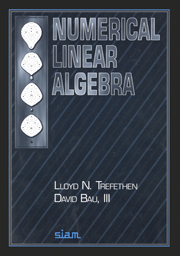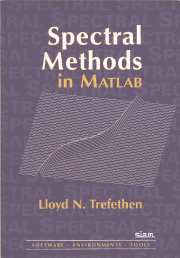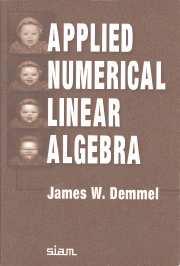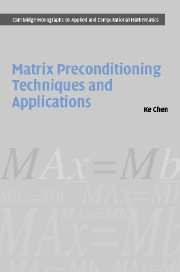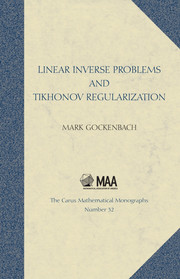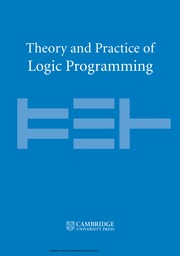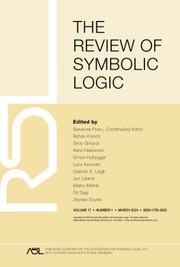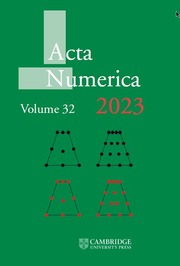Numerical Linear Algebra
This is a concise, insightful introduction to the field of numerical linear algebra. The clarity and eloquence of the presentation make it popular with teachers and students alike. The text aims to expand the reader's view of the field and to present standard material in a novel way. All of the most important topics in the field are covered with a fresh perspective, including iterative methods for systems of equations and eigenvalue problems and the underlying principles of conditioning and stability. Presentation is in the form of 40 lectures, which each focus on one or two central ideas. The unity between topics is emphasized throughout, with no risk of getting lost in details and technicalities. The book breaks with tradition by beginning with the QR factorization - an important and fresh idea for students, and the thread that connects most of the algorithms of numerical linear algebra.
- Concise and insightful introduction to the topic
- Presented as 40 lectures, each focusing on one or two central ideas
- Emphasizes connections between the subjects covered
Reviews & endorsements
' The authors are to be congratulated on producing a fresh and lively introduction to a fundamental area of numerical analysis.' G. W. Stewart, Mathematics of Computation
'…Each lecture in the textbook is pleasantly written in a conversational style and concludes with a set of related exercises. This low-cost textbook emphasizes many important and relevant topics in numerical linear algebra and seems ideal for a graduate course as long as it is accompanied by a textbook with more mathematical details.' Ricardo D. Fierro, SIAM Review
'Trefethen and Bau clear the dark clouds from numerical problems associated with factoring matrices, solving linear equations, and finding eigenvalues.' P. Cull, CHOICE
'Just exactly what I might have expected - an absorbing look at the familiar topics through the eyes of a master expositor. I have been reading it and learning a lot.' Paul Saylor, University of Illinois, Urbana-Champaign
'A beautifully written textbook offering a distinctive and original treatment. It will be of use to all who teach or study the subject.' Nicholas J. Higham, Professor of Applied Mathematics, University of Manchester
"This is a beautifully written book which carefully brings to the reader the important issues connected with the computational issues in matrix computations. The authors show a broad knowledge of this vital area and make wonderful connections to a variety of problems of current interest. The book is like a delicate soufflé --- tasteful and very light." -Gene Golub, Stanford University.
"I have used Numerical Linear Algebra in my introductory graduate course and I have found it to be almost the perfect text to introduce mathematics graduate students to the subject. I like the choice of topics and the format: a sequence of lectures. Each chapter (or lecture) carefully builds upon the material presented in previous chapters, providing new concepts in a very clear manner. Exercises at the end of each chapter reinforce the concepts, and in some cases introduce new ones. …The emphasis is on the mathematics behind the algorithms, in the understanding of why the algorithms work. …The text is sprinkled with examples and explanations, which keep the student focused." -Daniel B. Szyld, Department of Mathematics, Temple University.
"…This is an ideal book for a graduate course in numerical linear algebra (either in mathematics or in computer science departments); it presents the topics in such a way that background material comes along with the course. …I will use it again next time I teach this course!" -Suely Oliveira, Texas A&M University.
Product details
June 1997Paperback
9780898713619
184 pages
253 × 177 × 19 mm
0.64kg
Available
Table of Contents
- Preface
- Part I. Fundamental:
- 1. Matrix-vector multiplication
- 2. Orthogonal vectors and matrices
- 3. Norms
- 4. The singular value decomposition
- 5. More on the SVD
- Part II. QR Factorization and Least Squares:
- 6. Projectors
- 7. QR factorization
- 8. Gram-Schmidt orthogonalization
- 9. MATLAB
- 10. Householder triangularization
- 11. Least squares problems
- Part III. Conditioning and Stability:
- 12. Conditioning and condition numbers
- 13. Floating point arithmetic
- 14. Stability
- 15. More on stability
- 16. Stability of householder triangularization
- 17. Stability of back substitution
- 18. Conditioning of least squares problems
- 19. Stability of least squares algorithms
- Part IV. Systems of Equations:
- 20. Gaussian elimination
- 21. Pivoting
- 22. Stability of Gaussian elimination
- 23. Cholesky factorization
- Part V. Eigenvalues:
- 24. Eigenvalue problems
- 25. Overview of Eigenvalue algorithms
- 26. Reduction to Hessenberg or tridiagonal form
- 27. Rayleigh quotient, inverse iteration
- 28. QR algorithm without shifts
- 29. QR algorithm with shifts
- 30. Other Eigenvalue algorithms
- 31. Computing the SVD
- Part VI. Iterative Methods:
- 32. Overview of iterative methods
- 33. The Arnoldi iteration
- 34. How Arnoldi locates Eigenvalues
- 35. GMRES
- 36. The Lanczos iteration
- 37. From Lanczos to Gauss quadrature
- 38. Conjugate gradients
- 39. Biorthogonalization methods
- 40. Preconditioning
- Appendix
- Notes
- Bibliography
- Index.

